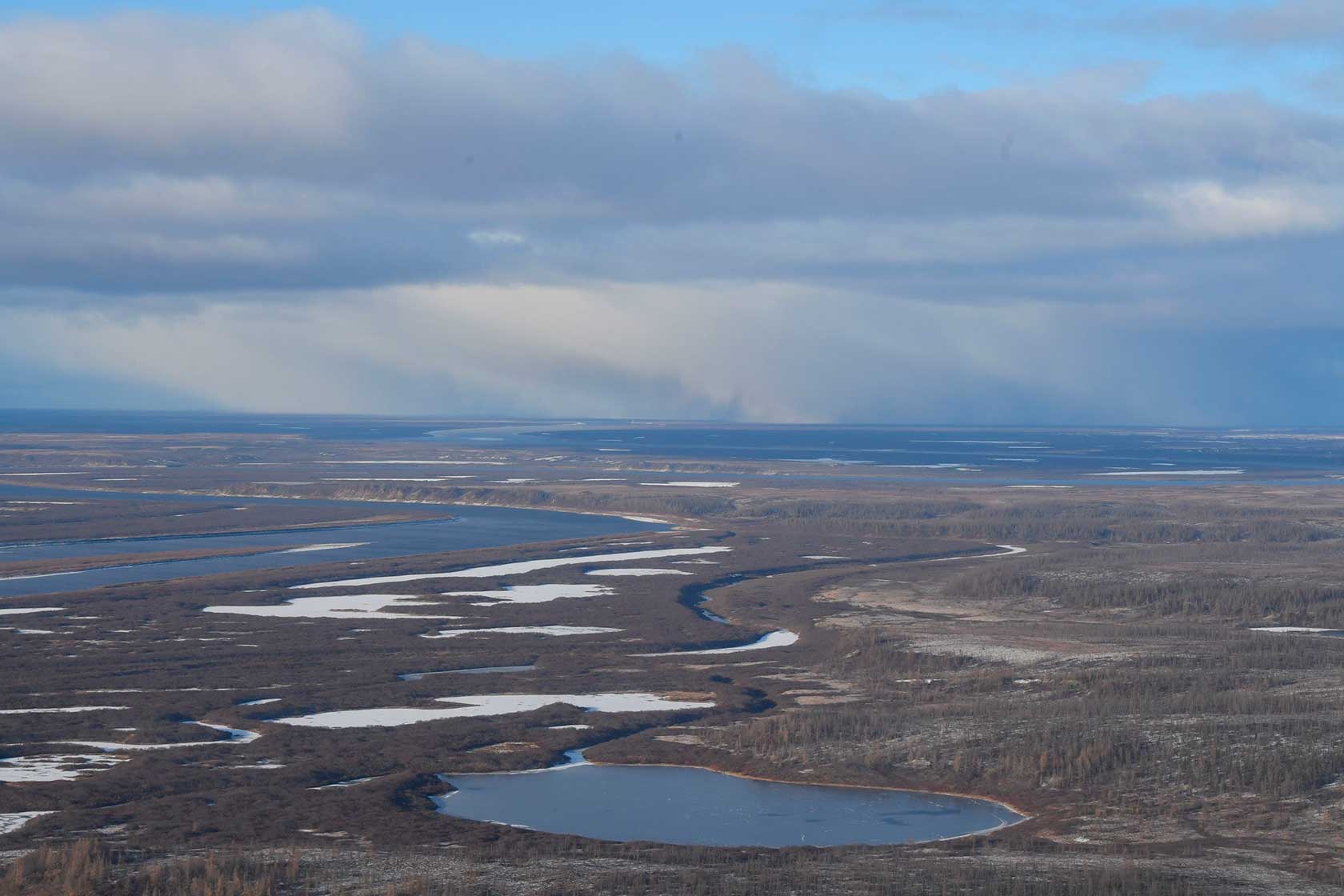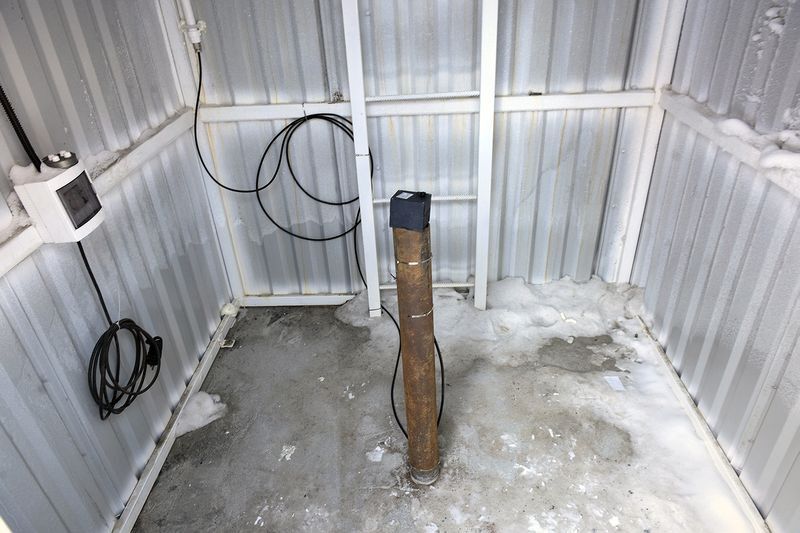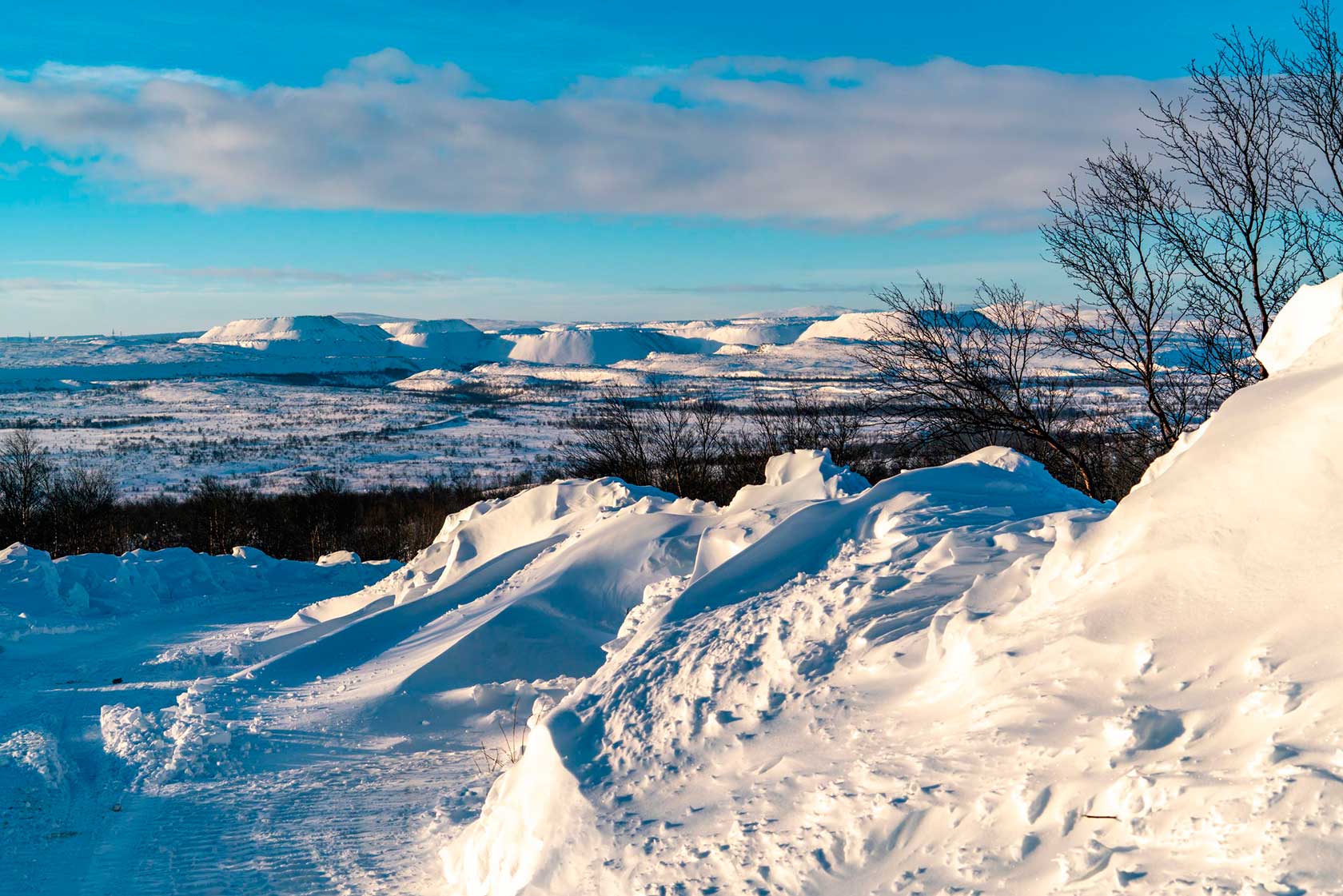Nornickel operates its main production and energy facilities in the Arctic zone. Studies show that average temperatures here are rising 3−4 times faster than the global average, making global warming of particular relevance for the company. Nornickel publishes the Climate Change Report featuring disclosures on its climate-related performance.
Reducing carbon footprint
In 2021, Nornickel adopted the environmental and climate change strategy. In 2024, this strategy was updated to address tighter legal requirements in Russia, and geopolitical developments. The strategy outlines measures to reduce GHG emissions through energy cost optimization.
Lean operations
The measures to improve energy efficiency helped Nornickel save 782.8 TJ of energy in 2024. This effect has been enabled through:
- optimization of TPP and HPP operating parameters;
- power infrastructure repair and rebuild.
Use of solar energy
In 2024, Nornickel became the first mining company to sign a contract to build a solar power plant in the Trans-Baikal Territory. Despite the cold climate, this region is one of Russia's most insolated territories. The plant was commissioned in 2025.
CO₂ absorption
In 2024, TÜV AUSTRIA validated Nornickel's methodology for calculating direct GHG absorption through gangue mineralization in tailings storage facilities to GOST R ISO 14064-1-2021 "Greenhouse gases. Part 1. Specification with guidance at the organization level for quantification and reporting of greenhouse gas emissions and removals". This methodology is a unique Russian practice and helps measure how much CO₂ the Company’s tailings storage facilities can absorb without anthropogenic intervention. We interact with scientists to study how we can leverage this natural process.

Climate projects
In 2024, Nornickel launched its first climate project at the Kola site. The main ventilation units at Severny Mine were switched from fuel oil to electric heating enabling the retirement of the onsite oil-fired boiler and resulting in a GHG emissions reduction equivalent to 17.5 kt of CO2. The project was recorded in the Russian Register of Carbon Units (CUs).
In addition, in September 2024, Nornickel purchased 10 thousand carbon units – the largest public transaction of 2024 in the national carbon market.
Nornickel continued to implement its environmental and climate change strategy in 2025.
In addition, in September 2024, Nornickel purchased 10 thousand carbon units – the largest public transaction of 2024 in the national carbon market.
Nornickel continued to implement its environmental and climate change strategy in 2025.
Forewarned is forearmed
We can slow the rate of global warming by reducing greenhouse gas emissions. As today's scientific forecasts suggest that environmental impacts are unavoidable, it is crucial to correctly assess the scale and consequences of potential changes and prepare for them. Adaptation for climate change is growing more and more relevant.

Permafrost thawing
Thawing permafrost poses a major threat to infrastructure, industrial facilities, homes and structures. For several years now, Nornickel has been working with scientists to assess the risks and make projections through to 2050.
Since 1959, ground temperature at a depth of 10 meters has increased by 4.3 °C. Significant temperature fluctuations have been recorded down to a depth of 90 meters, while at a depth up to 200 meters, the change was 0.3 °C
To understand the scale of change, the company has launched a multi-level monitoring system. In Partnership with the Polar State University, Nornickel carries out background permafrost monitoring in the natural landscapes, away from municipal housing. Nornickel conducts engineering and geological surveys at permafrost sites, having drilled 20 holes to a depth of 10 to 20 meters and three holes to a depth of 200 meters.

Observation findings and climate forecasts support a conclusion that the planet's surface temperature will increase throughout the Norilsk industrial district. Continuous permafrost zones, where at a depth of 10 meters soil currently freezes to -3–4°C, will disappear completely. And they account for up to 18% of the territory. Sporadic permafrost zones (from +1 to -0.5°C) will expand from 20% to 30% by total area.

All information is processed in a single information and diagnostic system to support further management decisions. Nornickel's monitoring project was highly regarded by the scientific, engineering and expert community and received several international and national awards.
Atmospheric phenomena
Thunderstorms in the Arctic have tripled in frequency over the past decade which is another consequence of global warming. Thunderstorm clouds form when warm, moist air rises into cooler, higher layers.

Thunderstorm used to be rare in the Arctic and lightning protection on power lines was not a widespread arrangement.
Recently, thunderstorm-caused power outages have become more frequent in the area of Nornickel's operations and the reliability of power supply to production plants, homes, and urban infrastructure has turned into a critical task for the Norilsk energy system.
Rain has replaced snow as the Arctic's most common precipitation, even in the winter. Freezing rains when abundant moisture instantly freezes on wires, have already caused power lines to break. The solution is to reinforce the structures or embed engineering arrangements to melt the ice.
Lack of precipitation is also an anomaly. The Arctic does experience droughts. For example, in 2013, the Norilsk River dropped to a critical level, which caused water supply disruptions in the city and at Nornickel's operating sites. Accurate and timely predictions of such events are critical.
And although these adverse phenomena cannot be prevented, their effects can be minimized if predicted early. That is why it is important to pool together the efforts of Nornickel and the scientific community to investigate the risks and maintain balance between climate change mitigation and adaptation.
Recently, thunderstorm-caused power outages have become more frequent in the area of Nornickel's operations and the reliability of power supply to production plants, homes, and urban infrastructure has turned into a critical task for the Norilsk energy system.
Rain has replaced snow as the Arctic's most common precipitation, even in the winter. Freezing rains when abundant moisture instantly freezes on wires, have already caused power lines to break. The solution is to reinforce the structures or embed engineering arrangements to melt the ice.
Lack of precipitation is also an anomaly. The Arctic does experience droughts. For example, in 2013, the Norilsk River dropped to a critical level, which caused water supply disruptions in the city and at Nornickel's operating sites. Accurate and timely predictions of such events are critical.
And although these adverse phenomena cannot be prevented, their effects can be minimized if predicted early. That is why it is important to pool together the efforts of Nornickel and the scientific community to investigate the risks and maintain balance between climate change mitigation and adaptation.

ALIKHAN AVARSKY,
Head of Climate Change Adaptation at Nornickel:
“The forecasts we have obtained through scientific collaboration indicate a long-term increase in the impact of climate factors on the company’s operations. Our assets are largely located in the regions experiencing the fastest warming rates; therefore, climate adaptation is becoming increasingly important for Nornickel. Yet, our current environmental and climate change strategy focuses primarily on reducing greenhouse gas emissions and, to a lesser extent, on adaptation to climate change.
That is why we are considering splitting climate into a separate action area to address GHG emission reduction, adaptation to climate change, and other related issues. The environmental focus in the strategy will center on industrial ecology: air, water, and soil pollution and biodiversity conservation in the regions of Nornickel's presence“.
Photos by Nornickel
October, 2025
October, 2025











